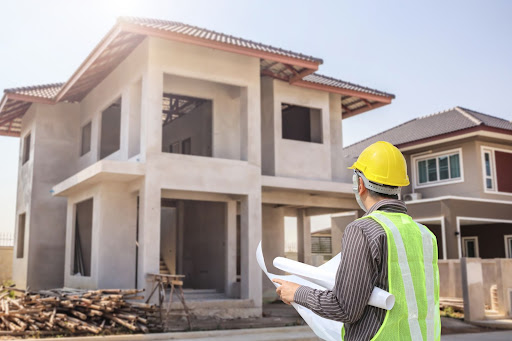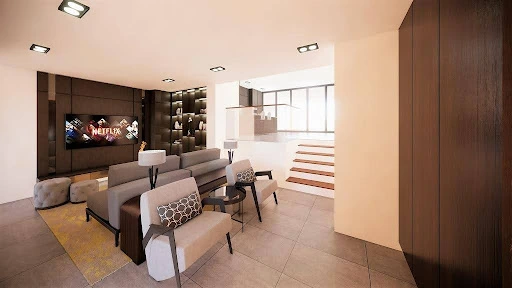
Design and Build: Innovative Way Of Building Your Home
May 3, 2023
Landed Renovation in Singapore: Tips & Trends for Your Home
May 3, 2023Guide To Reconstruction of Landed Property in Singapore

As a leading Singapore renovation company, our goal is to create luxurious and comfortable interiors that suit your lifestyle and budget. It can be difficult to renovate a landed property, whether it needs a comprehensive makeover or only small adjustments. In this article, we offer a comprehensive guide to reconstructing landed property in Singapore, covering important considerations and steps to take.
Regardless of whether it’s a major renovation or a minor renovation, this guide will provide helpful insights and information.
Understanding the Complexities and Challenges in Reconstruction
Renovating a landed property in Singapore can be difficult and complex, as it involves complying with local building codes and regulations. Any homeowner who has to undergo renovations, no matter how minor or extensive, may feel overwhelmed.
Before embarking on a reconstruction project for a landed house like semi detached home in Singapore, it is crucial to have a good understanding of the regulations that govern such projects. The Urban Redevelopment Authority (URA) is the main authority responsible for regulating and overseeing the development of landed properties in Singapore.
Singapore’s regulations for landed properties vary depending on the type of property, including bungalows, semi-detached, and terrace houses. Each type of landed property has its own specific regulations, such as plot ratios, setback requirements, and height restrictions. For properties situated in conservation areas or near public infrastructure like railways or highways, there may be additional regulations to follow.
It is significant to remember that breaking these rules might lead to penalties, legal troubles, and delays in the rehabilitation process. It is recommended to engage the services of a professional architect or contractor who has experience with the reconstruction of landed properties in Singapore and is familiar with the local regulations and building codes. It is best to hire a qualified architect or contractor who is familiar with local laws and building codes in order to ensure compliance with standards. This will save time and reduce legal risks.
Planning and Design

After understanding the regulations and hiring a contractor or architect, the next step is to plan and interior design of the reconstruction project. In addition, a budget must be developed and a design must satisfy the homeowner’s needs while complying with regulations. The planning permission and design phase is crucial as it sets the foundation for the entire reconstruction project. It is important to consider factors such as functionality, aesthetics, and sustainability during the planning and design phase.
Construction Phase

The construction phase is where the reconstruction project comes to life. It involves the actual physical work of demolishing and rebuilding the property. A well-managed project during this phase can ensure the project is completed on schedule and on budget. Effective communication between the contractor and the homeowner is also essential during the construction phase.
The contractor should provide regular updates and progress reports to the homeowner, and any issues or changes should be communicated promptly. Additionally, unexpected challenges may arise during the construction phase, such as poor weather conditions or unforeseen structural issues. These challenges should be addressed promptly and effectively to prevent delays or additional costs. It is important to have a contingency plan in place to manage such challenges.
Post-Construction Phase
Authorities inspect the renovation in the post-construction phase to ensure compliance with regulations and standards.
The contractor and homeowner should conduct a final inspection to ensure that all project components meet the required standards. Any outstanding issues should be addressed and resolved promptly. Getting a Certificate of Statutory Completion (CSC) from the authorities is also crucial. It certifies that the reconstruction project has been completed in compliance with regulations and is safe for occupation.
To renovate landed homes in Singapore successfully, careful planning, adherence to rules, effective project management, and clear communication between the contractor and homeowner are crucial. It’s crucial to hire a reputable contractor or construction company with expertise in renovation projects. They can offer guidance on regulatory requirements and manage the project efficiently.
Homeowners should also take the time to understand the regulations and requirements and ensure that their project complies with them. Homeowners can effectively manage the renovation process and realize their ideal house with the appropriate team and process knowledge.
Concluding Words
We are a renowned home restoration company in Singapore committed to designing luxurious interiors that suit your lifestyle and budget. Our years of experience allow us to deliver the best renovation packages and services for residential and commercial projects.
We hope you enjoyed reading this week’s article! For more home living and design articles, check out our blog!
Looking to give your dream home a makeover? Contact us today for a free consultation!



